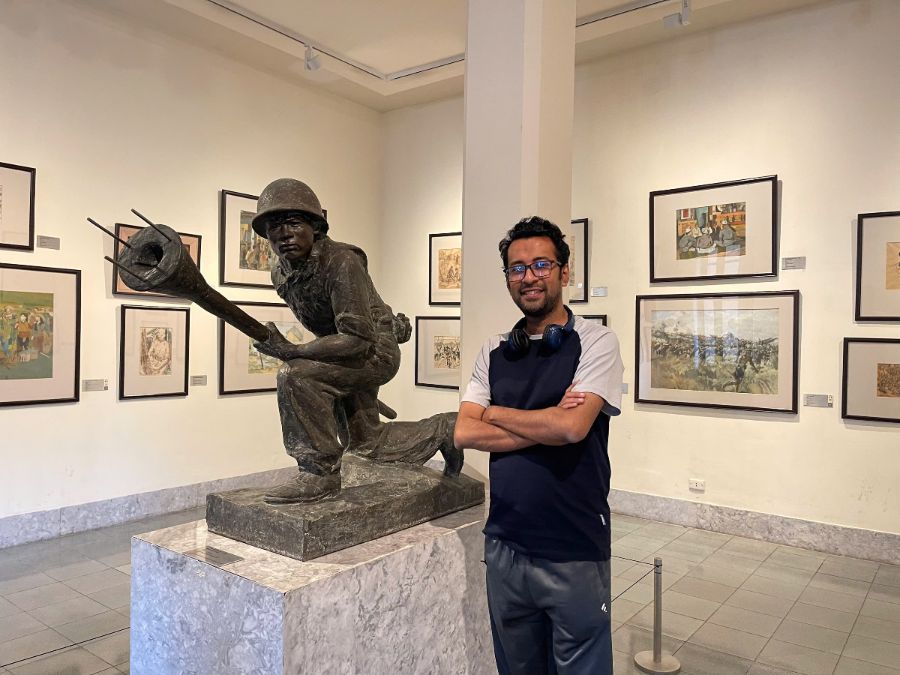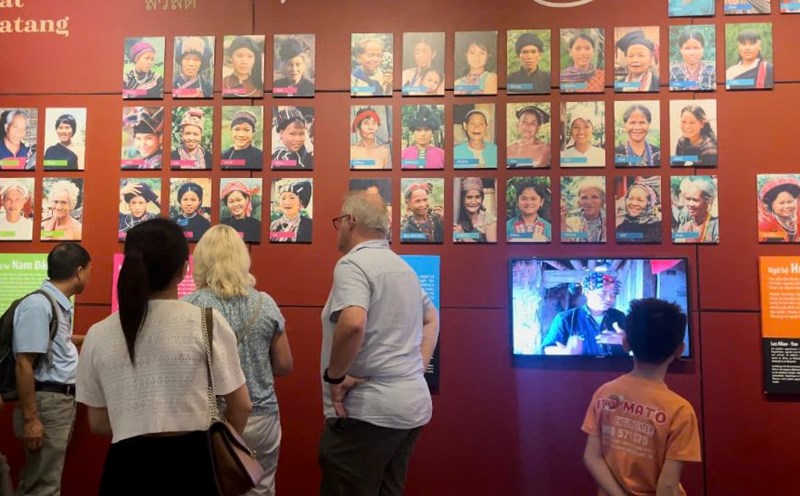According to Lao Dong, no longer as desolate and deserted as in previous years, some museums in Hanoi - where documents and artifacts related to national cultural heritage are kept - are now attracting a large number of domestic and international tourists.
One of the museums with the most stable and large number of visitors is the Vietnam Museum of Ethnology. It preserves and displays many cultural artifacts of all 54 ethnic groups of Vietnam, including 15,000 artifacts, 42,000 films (with color photos), 2,190 positive films, 273 tapes of interviews and music, 373 video tapes and 25 CD-Roms (as of 2000).
The Vietnam Fine Arts Museum is a place to collect and preserve nearly 20,000 valuable artifacts and works of art, reflecting the basic development history of Vietnamese fine arts; introducing nearly 2,000 artifacts in the permanent exhibition system with many different categories such as sculpture, architecture or painting.

With investments in materials, artifacts, and regular renovations to facilities, museums are forced to have a stable source of income to ensure the maintenance of fees. One of the forms being applied by the Vietnam Fine Arts Museum and the Vietnam Museum of Ethnology is selling entrance tickets.
Both museums have ticket prices of 40,000 VND for adults, 20,000 VND for students, 10,000 VND for children and free for children under 6 years old, ethnic minorities, people with disabilities...
According to Dr. An Thu Tra - Head of the Department of Communication and Education, Vietnam Museum of Ethnology, the museum currently operates under a model of partial autonomy in revenue and expenditure. Therefore, in addition to revenue from ticket sales, this unit must make efforts to improve service quality to attract visitors.
Ms. Tra said that the Vietnam Museum of Ethnology welcomes nearly half a million visitors each year. It is estimated that this unit usually welcomes 1,000 - 2,000 visitors on weekends. In particular, on holidays or events, the museum can welcome from 10,000 - 15,000 visitors in 2 weekends.

"In previous years, the low season fell in June and July. However, the number of visitors this year is higher than the same period last year, reaching the average number as in previous months. The revenue generated in the short term is still enough to operate the system.
Currently, we are still increasing the creation of check-in points, diversifying channels and content of online and on-site communication channels, and diversifying forms of experience such as using technology glasses (VR, AR), themed tours with QR codes, virtual exhibitions, discovery rooms for children, multimedia rooms, etc.
This activity is in line with the general trend when people (especially the younger generation) look for places to experience reality, both providing knowledge value, learning about traditional cultural heritage and meeting entertainment needs, instead of playing video games, "burning" time on social networks", Ms. An emphasized.
This leader also said that because the museum is quite large, has an outdoor exhibition area, and houses many traditional folk houses, the museum must preserve and repair it every year and spend a huge amount of money. Partially autonomous operations and limited revenue are certain difficulties for the Vietnam Museum of Ethnology.
Ms. An Thu Tra added: "We have to diversify and increase activities to attract visitors from different groups. Next, we cooperate with domestic and foreign organizations to organize thematic exhibitions. This has even been applied during the COVID-19 period in both online and offline forms to socialize activities.
Since COVID-19, there have been many activities in the form of socialization, thereby reducing dependence on revenue sources such as ticket sales.
We also consider carefully and do not sign long-term contracts with schools or travel companies to maintain revenue, but only cooperate, introduce, promote images, and listen to opinions from travel companies to improve quality."
In the current social context, when the trend of returning to old values is becoming a "trend", in addition to maintaining and enriching sources of documents and artifacts, museums in Vietnam should overcome difficulties in technology, human resources, innovate, and diversify forms of experience to attract tourists.
At that time, these museums will both contribute to preserving heritage and creating economic surplus value, bringing national cultural heritage closer to the people, especially the young generation.











